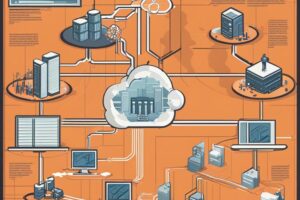The Education-Income Gap – What You Need To Know To Succeed
With the widening education-income gap, understanding how your level of education directly impacts your earning potential has never been more important. This disparity not only influences your financial stability but also shapes your career opportunities and overall quality of life. By recognizing the factors that contribute to this gap, you can make informed decisions about your educational path and strategically position yourself for success in today’s competitive job market. Gain insights into the connection between education and income, and learn how to harness this knowledge for your benefit.

Understanding the Education-Income Gap
Before diving deeper into the complexities surrounding the education-income gap, it’s important to clarify what this term actually means. The education-income gap refers to the disparity between income levels based on an individual’s educational attainment. In essence, it reflects how much education you achieve can directly impact your earning potential. Those who have obtained higher degrees, such as bachelor’s or master’s degrees, generally have access to better job opportunities, higher salaries, and more benefits compared to individuals with only high school diplomas or less. Areas of this gap can vary significantly by region, industry, and demographic factors, hinting at a broad and ongoing inequality in income distribution that directly correlates with education levels.
The concept of the education-income gap isn’t just a modern phenomenon; it has roots that go back many decades. The industrial revolution marked the beginning of educational reforms aimed at creating a workforce suited for emerging industries. As a result, higher education became a prized asset, laying the groundwork for future disparities. Over the years, as economies transitioned from manufacturing to knowledge-based sectors, the importance of education in securing better economic prospects grew increasingly evident. That shift has become pronounced in recent decades, as technology and globalization have dramatically reshaped job markets and created a higher premium for educated workers.
You should also consider the broader socioeconomic factors that have influenced educational access and quality. Over time, historical inequalities—such as racial, gender, and class discrimination—have compounded the challenges faced by certain groups in accessing quality education. If you come from a background with limited resources, you are likely at a disadvantage, leading to a cycle where less education translates into lower income, perpetuating the education-income gap further. The combination of limited opportunities and systemic barriers has fueled this issue to the forefront of economic discussions around social mobility and equity.
Current Statistics and Trends
Between various studies and reports, the statistics surrounding the education-income gap illustrate a concerning trend. Data suggest that those with a bachelor’s degree earn approximately 66% more than their counterparts without a college degree. A significant gradient emerges as educational attainment increases; for example, individuals with master’s degrees often earn twice as much as those with only a high school diploma. This clear divide shows that the more education you pursue, the better your financial prospects become, reinforcing the need for access to higher education and professional development.
Even more alarming is the fact that the education-income gap isn’t just a statistic; it translates into real-life consequences for you and others. With student loan debts rising, many individuals are left questioning the return on investment in education. They may wonder whether pursuing higher education is worth it considering the financial burden involved. On the other hand, those who invest in their education still find that long-term benefits often outweigh initial costs, especially in high-demand fields such as technology, healthcare, and engineering. The investment in education can still be your ticket to upward mobility.
As workforce demands evolve, so do the educational requirements needed to succeed in various industries. Current trends show an increasing demand for skills that can only be acquired through higher education or specialized training programs. Fields like artificial intelligence, renewable energy, and biotechnology are always evolving, which enhances the importance of keeping your skills up to date. The disparity in education and income in these realms is expected to continue growing, emphasizing the need for individuals to pursue continued learning and improvement. Understanding these trends can help you make informed choices about your educational path.
Key Factors Contributing to the Gap
Any discussion surrounding the education-income gap would be incomplete without outlining some key factors that contribute to this disparity. Many elements come into play, including economic environment, education policies, and personal circumstances. The economic backdrop of your region sets the stage for job availability and demand for skilled labor, influencing the value placed upon education. Professionally driven education policies can either mitigate or exacerbate this gap. Furthermore, your unique circumstances, whether they be socioeconomic background, access to quality educational resources, or familial support systems, will significantly shape your access to educational opportunities.
- Economic environment
- Education policies
- Personal circumstances
The trends observed in educational access and financial return illustrate the multifaceted nature of the education-income gap. You must recognize that the interplay between structural factors and personal choices helps define your trajectory in this arena.
At its core, a range of individual and systemic issues collectively underpin the education-income gap. Among these factors, consider inequitable funding for schools, disparities in educational quality, and cultural barriers. The quality of education you receive, alongside systemic inequalities, can make or break your access to higher-income opportunities. Job market trends and educational systems that promote inclusivity also contribute to shaping the pathways through which you navigate your educational journey. Ultimately, by understanding these elements, you can equip yourself with the knowledge necessary to navigate your own path more effectively.
The Role of Education in Income Potential
While the correlation between education and income has long been a topic of discussion, understanding the nuances of how different elements of education impact your earning potential is necessary. Many individuals often equate a higher degree with higher income, but the reality is more complicated than that. Degree types, the field of study, and different educational pathways all play significant roles in determining your overall financial success. In this section, we will explore how these factors contribute to the income gap, providing you with insights that can shape your career trajectory.
Impact of Degree Types on Earnings
To begin with, the type of degree you obtain can often dictate your earning potential significantly. Generally speaking, individuals with advanced degrees such as a master’s or doctorate often earn more than those with only a bachelor’s degree. However, the landscape can change dramatically when you consider the field in which the degree is obtained. For example, a bachelor’s degree in engineering may yield a higher starting salary compared to a master’s degree in fine arts. Here is a brief overview of various degree types and their associated average salaries:
| Degree Type | Average Salary |
| Bachelor’s Degree | $60,000 |
| Master’s Degree | $70,000 |
| Doctorate Degree | $90,000 |
| Associate Degree | $40,000 |
| High School Diploma | $30,000 |
Importantly, the *impact of degree types on earnings* does not solely depend on the educational attainment but also varies with the industry and occupation. A person graduating with a computer science degree—especially in today’s technology-driven world—may find themselves earning a substantially higher salary compared to their peers who majored in fields that are less in demand. When choosing a degree, therefore, it is wise to consider both the level of education and the market conditions for various fields, which can greatly influence starting salaries and long-term earning potential.
After analyzing the differences in earnings based on education level, it becomes evident that a strategic approach to selecting your educational path can benefit you significantly. Understanding the financial implications of various degrees allows you to make informed decisions that align with your career goals and financial aspirations. Your choice of degree can, therefore, serve as a roadmap to achieving the income you desire.
The Importance of Field of Study
For many, selecting a field of study goes beyond personal interest; it can also be a daunting consideration in terms of future income. Certain fields, such as healthcare and technology, have established a strong relationship with lucrative job opportunities and higher salaries. Conversely, sectors like the arts or humanities often do not yield the same level of financial stability, even with equivalent educational qualifications. Your choice of major can dramatically influence your earning capacity and job security.
One aspect that is often overlooked is the *growth potential* within specific industries. Fields that are expected to expand significantly—such as renewable energy or data analytics—often offer more job openings and competitive salaries. It’s necessary to assess current market trends in relation to your field of study, as this can guide you toward opportunities with higher returns on your educational investment. Therefore, knowing which areas are on the rise can help you carve out a successful professional path.
Income potential in various fields of study can be starkly different. While you might have a passion for a particular subject, balancing that passion with an understanding of potential earnings is vital. Evaluating job markets and salary averages for your intended major can help you gauge whether you are aligning your education with your financial goals.
Vocational Training vs. Traditional Degrees
Across the educational landscape, there’s a growing conversation about the value of vocational training compared to traditional degrees. Many individuals have found that pursuing vocational pathways often leads to rapid employment and financial stability without the burden of extensive student loans. Skilled trades, healthcare certifications, and technology-focused training programs can provide robust job opportunities, often in less time and with less financial investment than a four-year college degree.
Vocational training programs often focus on practical skills that are immediately applicable in the workforce. This immediacy can translate into higher earning potential sooner than traditional degree holders might experience. It’s important, however, to assess the demand for specific trades in your area. Fields like plumbing and electrical work, for instance, are consistently in need of skilled professionals, resulting in competitive salaries.
Potential graduates should weigh their options carefully. Understanding the differences between vocational training and traditional degrees can set you on a path better suited to your personal and financial aspirations. By exploring various educational opportunities, you can align your skills, interests, and income potential, positioning yourself for career success.
Societal and Economic Implications
Effects on Social Mobility
Not understanding the effects of the education-income gap can lead to misconceptions about social mobility in society today. Above all, social mobility relies heavily on access to quality education, which often correlates directly with income levels. When you live in a community where educational resources are scarce or underfunded, you may find that the opportunities to advance financially and socially diminish significantly. This creates a cycle that is difficult to break, as individuals from lower-income backgrounds struggle to attain the same educational standards as their wealthier peers, thus limiting their professional aspirations and potential.
Furthermore, the persistent education-income gap reinforces social stratification, making it challenging for you to change your social standing. If you come from a family with limited educational attainment, your chances of accessing higher education diminish, leading to consistent lower income levels. You should note that this affects not only individuals but also the collective potential of society as a whole by limiting the contributions from talented individuals who may lack the necessary means to succeed. The result is a workforce that isn’t maximizing its potential and an economy that suffers from stagnation.
Additionally, policies aimed at improving education must focus on equitable access for all, regardless of socioeconomic status. By prioritizing investment in education, you can advocate for programs that uplift disadvantaged communities, thereby promoting greater social mobility for future generations. Ultimately, you are not just investing in individuals; you are investing in the social fabric that can uplift entire communities and reduce inequality. Education not only enriches the learner but also strengthens societal bonds by facilitating a more equitable environment.
Economic Contributions of an Educated Workforce
Mobility and economic prosperity go hand in hand, especially when considering the contributions of an educated workforce to the broader economy. Above all, education equips individuals with the necessary skills and knowledge to fill high-demand jobs, which can drive innovation and productivity across industries. When you invest in your education, you are enhancing not only your personal earning potential but also contributing to the overall economic health of your community and country. A skilled workforce leads to increased economic output, higher tax revenues, and improved public services.
Moreover, a well-educated workforce fosters a culture of entrepreneurship and competitiveness. As individuals pursue their educational goals, they become more inclined to start businesses or innovate solutions to complex problems. You might find that the economic landscape is shaped significantly by freshly trained minds applying their knowledge in practical ways, further contributing to job creation and sustainable growth. This intertwining of education and economic activity demonstrates that your personal choices about education have far-reaching implications beyond your immediate financial situation.
A skilled workforce serves as a catalyst for economic growth and increased productivity. Companies thrive with talented employees who can adapt to changes in technology and market demands, enhancing overall efficiency. When you choose to pursue higher education or vocational training, you not only improve your potential income but also create an economic ripple effect that benefits multiple aspects of society.
Regional Disparities in Education and Income
Beside the stark differences in educational attainment across socioeconomic lines, you should also be aware of the regional disparities that exist within a country. Different geographic areas experience varying levels of educational access due to factors such as local funding for schools, employment opportunities, and state policies. If you live in a rural or underdeveloped area, you may encounter significant challenges in accessing quality education, which can subsequently limit your economic prospects. This uneven distribution of educational resources exacerbates income inequality, as individuals from certain regions struggle more than others to climb the socioeconomic ladder.
The implications of these regional disparities stretch beyond personal income. Communities lacking fertile educational environments often face increased rates of poverty, unemployment, and social instability. Local economies can stagnate when a significant portion of the population is not equipped with the skills necessary to participate in a rapidly evolving job market. You might find that areas with a higher concentration of educated individuals benefit from a vibrant economy, while those with less access to education experience ongoing struggles economically and socially.
Contributions to overall economic strength require addressing these regional disparities head-on. It is imperative for policymakers to prioritize funding for educational programs in underserved areas, ensuring that all communities have access to the resources needed for success. Initiatives that bridge the educational divide can uplift entire communities, creating a more equitable playing field and fostering economic growth across diverse geographic areas. Your participation in advocacy for fair educational investments can help reshape the landscape of opportunity for future generations.
Personal Strategies for Bridging the Gap
Choosing the Right Educational Path
Against the backdrop of the education-income gap, it’s vital for you to carefully evaluate your educational choices. You need to consider what qualifications are not only in demand but also align with your interests and career goals. Research various industries and fields of study, and take note of emerging trends. Whether you are leaning toward traditional degree programs or looking into vocational training, understanding which paths lead to stable and lucrative job opportunities is vital for ensuring your time and investment pay off.
In your decision-making process, remember that higher education does not always equate to job security or high income. You should critically assess the fields that are more likely to yield financial returns. Focus on disciplines or trade schools that offer training in high-demand skills. Look for programs that emphasize practical experience and hands-on training, as these will enhance your employability and provide you with a competitive edge.
Beyond merely choosing a path, you should also consider the geographical and social dynamics that may influence your choices. Certain areas may have a higher demand for specific skills, while others may not. Balance your aspirations with the practical aspects of location, cost, and access to opportunities that come with particular educational paths. In doing so, you align your educational journey with potential earning prospects and job availability, setting yourself up for greater success.
Building Marketable Skills
Between choosing the right educational path and achieving financial stability, building marketable skills is substantial. Identify the capabilities that employers are currently seeking. By aligning your skill set with the demands of the job market, you increase your chances of gaining employment. In many cases, companies are looking for candidates who possess both technical abilities and interpersonal skills, making it imperative that you enhance both areas.
You might see great value in opting for hands-on experiences such as internships, workshops, or even online courses, all of which can supplement your education. These opportunities will not only help you earn practical experience but also enhance your résumé, showcasing your commitment to professional growth. As you pursue additional qualifications, focus on gaining skills that can be adapted across multiple industries, thus expanding your employability.
Ultimately, the goal is to create a well-rounded skill set that makes you an attractive candidate to employers. Analyze job postings, attend industry events, and engage with professionals to understand what is being sought after. This ongoing learning process will keep you agile and capable of meeting the evolving demands of the workforce.
In addition to formal education, seek opportunities for self-directed learning. Embrace online platforms like MOOCs (Massive Open Online Courses) or trade-specific blogs and forums. These resources can provide you with valuable insights and updates in your field, all while enhancing your knowledge base without the constraints of traditional education.
Networking and Professional Development
An important element in bridging the education-income gap lies in networking and professional development. Establishing connections within your industry is vital, as many job opportunities arise through referrals or introductions. Take the initiative to attend networking events, conferences, or industry meet-ups to meet like-minded professionals and potential employers. Making meaningful connections can significantly improve your chances of finding better job prospects.
In addition to meeting new people, actively seek out mentorship opportunities. A mentor can provide you with feedback, open doors, and guide you through the often-complex job search process. This relationship allows you to gain insights from someone with experience, helping you navigate challenges more effectively. By building a strong professional network, you create a support system that can help propel your career forward.
Another aspect to focus on is lifelong learning. Engage in ongoing professional development through workshops, certifications, and industry-specific training. Staying current not only enhances your skill set but also demonstrates your commitment to growth and adaptability to employers. By continuously evolving your expertise, you set yourself apart in a crowded job market and position yourself as an attractive candidate for advancement or new opportunities.
Another way to enhance your networking is by utilizing social media platforms like LinkedIn. An active online presence can amplify your visibility and connect you with professionals in your field, giving you access to job postings and industry news. A well-curated profile can act as your digital résumé, showcasing your education, skills, and experiences to potential employers.
Government and Policy Framework
Many factors contribute to the education-income gap, and understanding the government and policy frameworks is necessary for you to navigate this landscape effectively. Education policies significantly impact economic outcomes by shaping the opportunities available to you, whether you are pursuing higher education or seeking vocational training. Policies that prioritize funding for K-12 education directly influence your access to quality education, which can determine your ability to achieve higher academic credentials and, subsequently, higher income levels. Moreover, existing disparities in funding often reflect systemic inequalities, which can make it challenging for you to attain the educational achievements needed to improve your economic situation.
By focusing on educational reforms, governments can create programs that target under-resourced communities and prioritize equitable distribution of resources. Initiatives like implementing universal pre-K, enhancing teacher training, and investing in STEM education not only prepare students academically but also equip you with the necessary skills to thrive in a competitive job market. Additionally, policies promoting apprenticeships and dual-enrollment programs foster connections between education and the workforce, aligning what you learn with industry needs. These changes can ultimately support your transition into higher wage jobs, bridging the gap between your education and your economic potential.
Moreover, it’s vital to stay informed about legislation affecting student loan policies and the availability of educational grants and scholarships. Such measures can create pathways for you to pursue higher education without being burdened by overwhelming debt, which may otherwise limit your economic mobility. As policies evolve, you should advocate for changes that directly benefit your educational journey and overall economic stability. Active participation in understanding and influencing these policies is a fundamental step toward ensuring your success in overcoming the education-income gap.
Financial Aid and Responsiveness
Around the country, financial aid programs have been vital in helping students access higher education, yet there are ongoing calls for reform to make these systems more responsive to your needs. The complexity and inconsistency of financial aid can often feel overwhelming, as you navigate the various options available, like grants, scholarships, and loans. Despite the potential benefits, many students remain unaware of the resources at their disposal, which can result in missed opportunities for funding. Ensuring that you are well-informed about financial aid options is necessary to making the most of your educational prospects.
Strong governmental policies for financial aid should prioritize transparency and accessibility, so you can easily assess your eligibility and apply for assistance. This includes simplifying the application process for federal financial aid through the FAFSA and ensuring that information about available resources is clear and widely distributed. Moreover, programs should be adaptable to the unique circumstances you face, such as the need for flexible repayment options for existing loans or targeted grants for non-traditional students, including those returning to education later in life.
Understanding the financial aid landscape enables you to leverage these opportunities effectively and avoid taking on unnecessary debt. As financial challenges may persist, advocating for more responsive financial aid systems can significantly impact the trajectory of your education and career. It is your responsibility to stay informed, seek out available resources, and actively participate in discussions surrounding financial aid reform to better position yourself for success.
Understanding financial aid is not only about obtaining funding; it also involves recognizing how economic conditions and policy changes can affect funding availability. Ongoing legislative efforts can lead to shifts in financial aid that directly influence your affordability of education, so staying informed about potential changes in these programs is vital for planning your educational journey.
Role of Community Colleges and Alternative Education
Role of community colleges and alternative education pathways in reducing the education-income gap cannot be overstated. These institutions often serve as a vital resource for individuals like you who may not be able to afford traditional four-year universities. Community colleges provide an affordable, accessible option that enables you to obtain the skills and qualifications necessary for gaining employment or transferring to a university. Furthermore, they often offer tailored programs based on local industry needs, ensuring you receive the training necessary for in-demand jobs within your area.
Alternative education options also play a significant role in democratizing access to quality education. Programs like vocational training, apprenticeships, and online learning platforms provide diverse pathways for you to achieve your educational and career goals. These alternatives are particularly crucial for those who may not thrive in a traditional classroom setting or for individuals seeking to balance work and education. By embracing these options, you can take control of your learning experience and create a personalized path toward your desired career.
Furthermore, your acceptance of alternative education can lead to enhanced career flexibility and potential for higher earnings. As industries continue to evolve, the demand for skilled workers increases, allowing you to capitalize on training that aligns with current workforce needs. It is necessary to remain open-minded about your educational journey, recognizing that community colleges and alternative education avenues provide valuable opportunities that can bridge the education-income gap effectively.
Community colleges represent a strong support system for individuals navigating the education-income gap, providing unique opportunities to gain skills and credentials without incurring substantial debt. By actively engaging with these institutions, you equip yourself with the tools needed to advance economically while boosting your employability in a competitive job market.
Future Outlook
Emerging Trends in Education and Employment
Your understanding of the education-income gap is vital as emerging trends in education and employment will significantly shape your opportunities in the coming years. To remain competitive and successful in the job market, you need to stay informed about these trends. One notable movement is the shift towards skill-based hiring, where employers prioritize specific skills over traditional degrees. This focus on competencies enables you, as a job seeker, to leverage various modes of training, including online courses, certification programs, and boot camps to showcase your abilities.
Another imperative trend is the increasing importance of technology in education. Traditional classroom settings are evolving, and you may find more learning opportunities through digital platforms that offer personalized and flexible approaches. With the rise of artificial intelligence and data analytics, educational institutions are beginning to tailor their curriculums, catering to the specific demands of the labor market. This means you can expect to see more interdisciplinary programs that blend technology skills with other fields, preparing you for a diverse range of careers.
Lastly, as the demand for lifelong learning grows, you will need to adopt a mindset that embraces continuous education. Whether you work in an established industry or one that is rapidly changing, you must be adaptable to keep your skills relevant. Online learning platforms, seminars, and workshops will play pivotal roles in your professional development, emphasizing the need for you to pursue personal and professional growth throughout your career.
The Rise of Remote Learning and Its Impact
Behind the rapidly changing educational landscape is the rise of remote learning, which has gained unprecedented traction in recent years. You may have noticed how more institutions are offering online courses, giving you the flexibility to learn from anywhere and at any time. This shift not only expands your access to education but also removes geographical barriers, allowing you to enroll in top-tier programs without the need to relocate. As a result, you might find yourself with a wealth of educational resources at your fingertips, ultimately enhancing your skill set.
The impact of remote learning on your educational experience can be profound. Access to diverse learning modes, such as video lectures, interactive forums, and personalized mentorship, enables you to engage in a way that is most effective for you. This trend may allow you to cultivate a learning environment that suits your individual needs and preferences. Additionally, as remote learning becomes more mainstream, employers may begin to view online credentials more favorably, further legitimizing non-traditional educational paths.
In addition, the rise of remote learning is likely to blur the lines between formal education and self-directed learning. You may find it increasingly common to mix various online courses, seminars, and practical experiences to create a robust educational foundation that aligns with your career goals. This blend of experiences will provide you with a unique advantage, as you develop a tailored skill set that reflects the current job market’s demands and trends.
Predictions for the Next Decade
Future predictions for the next decade point towards a dynamic interplay between education and economic opportunities. You can anticipate a landscape where the emphasis on certifications and skills will intensify, shifting from traditional degrees as the gold standard for employment. Many industries are likely to embrace alternative routes to competency, paving the way for a more inclusive job market. This change means that you may have a greater chance of succeeding in your career if you actively seek out skill-building opportunities and continuously adapt to market demands.
Moreover, the optimization of learning experiences through technology will be a major driving force in your educational journey. Expect to see a rise in personalized learning environments powered by artificial intelligence, enabling you to study at your own pace and focus on the areas that need improvement. With this level of personalization, the way you acquire knowledge will become more efficient, and your potential to stand out in the job market will increase significantly.
But as you look towards the horizon, it is imperative to remain aware of the potential challenges that may arise from these predictions. For instance, the digital divide could exacerbate existing inequalities, leaving those without access to technology or high-speed internet at a disadvantage. Although the opportunities are abundant, you must actively engage in finding ways to bridge these gaps, ensuring that you optimize the resources available to you while remaining vigilant to the disparities that may persist.
Summing up
As a reminder, the education-income gap is not just a statistic; it is a profound reality that can significantly impact your career trajectory and overall financial wellbeing. Understanding this gap empowers you to make informed choices. The disparity in income levels between those with higher education and those with less can seem daunting, but by valuing education and continually seeking opportunities for learning, you can equip yourself with the skills necessary to thrive in today’s competitive job market. This gap illustrates that educational attainment often correlates with economic mobility, and therefore, investing in your education can yield substantial long-term benefits.
Your next steps should involve not just pursuing formal education, but also engaging in lifelong learning experiences. Whether that means earning a degree, acquiring certifications, or honing skills through workshops and online courses, each step you take adds value to your personal brand. Surround yourself with networks that encourage growth and provide mentorship, as these relationships can lead to opportunities that fulfill your career aspirations. Additionally, embracing technology and online platforms can help you acquire new skills that are increasingly in demand in the workforce, thereby making you more competitive and well-rounded.
Ultimately, addressing the education-income gap is about taking ownership of your professional development. By being proactive in your learning journey and strategically planning your career path, you can navigate the complexities of the job market more effectively. It is important to keep an eye on economic trends and the evolving demands of industries, so you can adjust your goals accordingly. The world in which you work is continuously changing, and by committing to your education, you position yourself to adapt and succeed despite those fluctuations. Your determination to bridge the education-income gap can set the stage for a fulfilling career and a more secure financial future.
FAQ
Q: What is the education-income gap and why is it significant?
A: The education-income gap refers to the disparity in earnings between individuals with varying levels of education. Typically, those with higher educational qualifications tend to earn significantly more than those with only a high school diploma or less. This gap is significant because it highlights the role of education in securing better job opportunities and a higher standard of living. Understanding this gap can help individuals make informed choices about their education and career paths, ultimately influencing their financial stability and overall life satisfaction.
Q: How can I narrow the education-income gap in my own career?
A: Narrowing the education-income gap in your career can be achieved through several strategies. First, consider investing time in further education, whether through obtaining a degree, certifications, or other training programs relevant to your field. Networking is also vital; building connections within your industry can lead to mentorship opportunities, job openings, and career advancements. Additionally, seeking internships or volunteer work can provide valuable experience, even before completing formal education, helping you to stand out to potential employers and increase your earning potential.
Q: What resources are available for individuals seeking to improve their education and income prospects?
A: There are numerous resources available for individuals looking to enhance their education and potential income. Many community colleges offer affordable degree programs and vocational training. Online learning platforms like Coursera and Udemy provide access to a wide range of courses in various subjects. Additionally, local libraries and community centers often host workshops and information sessions on career development. Scholarships and financial aid are options available for those who wish to pursue higher education but may face financial barriers. Utilizing these resources can significantly aid in bridging the education-income gap.
![]()













